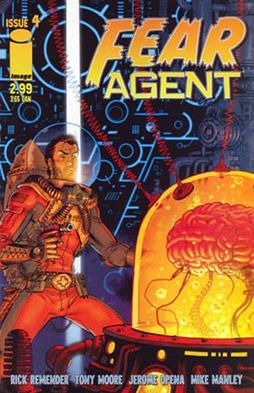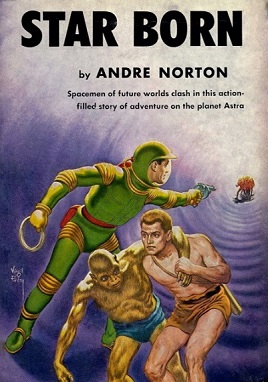
John Keith Laumer was an American science fiction author. Prior to becoming a full-time writer, he was an officer in the United States Air Force and a diplomat in the United States Foreign Service. His older brother March Laumer was also a writer, known for his adult reinterpretations of the Land of Oz. Frank Laumer, their youngest brother, is a historian and writer.

Valérian and Laureline, originally titled Valérian: Spatio-Temporal Agent and also commonly known as Valérian, is a French science fiction comics series, created by writer Pierre Christin and artist Jean-Claude Mézières. It was first published in Pilote magazine in 1967; the final installment was published in 2010. All of the Valérian stories have been collected in comic album format, comprising some twenty-one volumes plus a short story collection and an encyclopædia.
William H. Keith is an American author mainly contributing to military science fiction and military fiction and related game design, who writes also under several pen names, such as Ian Douglas, Robert Cain and H. Jay Riker. His newer original works are written under the name of Ian Douglas.
The Bolo universe is a fictional universe based on a series of military science fiction books by author Keith Laumer. It primarily revolves around the eponymous "Bolo", a type of self-aware tank. They first appeared in the short story Combat Unit (1960), and have since been featured in science fiction novels and short story anthologies by him and others.

Aliens vs. Predator is a comic book series published by Dark Horse Comics between 1989 and 2020 on an intermittent basis, written and drawn by various artists. Dark Horse also publishes the Aliens and Predator lines of comics.

Alien Legion is an American science fiction comic-book series, with several associated titles, created by Carl Potts, Alan Zelenetz, and Frank Cirocco for Marvel Comics' Epic Comics imprint in 1983. It features a military unit, Force Nomad, similar to the French Foreign Legion.

Star Drive is a science fiction campaign setting that was published in 1998 by TSR, Inc. for the Alternity role-playing game. The first published setting for Alternity was provided in the Star Drive Campaign Setting book in 1998.

A science fiction magazine is a publication that offers primarily science fiction, either in a hard-copy periodical format or on the Internet. Science fiction magazines traditionally featured speculative fiction in short story, novelette, novella or novel form, a format that continues into the present day. Many also contain editorials, book reviews or articles, and some also include stories in the fantasy and horror genres.

"Operation: Galactic Storm" is a 19-part comic book crossover storyline which ran through Marvel Comics' Avengers related titles – Avengers, Avengers West Coast, Captain America, Iron Man, Thor, Wonder Man, and Quasar – between March and May 1992.

"The Heart of the Serpent" is a 1958 science fiction short story by the Soviet writer and paleontologist Ivan Yefremov.

Aliens is a line of several comic books set in the fictional universe of the Alien films published by Dark Horse Comics from 1988 forward. The stories often feature the company Weyland-Yutani and the United States Colonial Marines. Originally intended as a sequel to James Cameron's 1986 film Aliens, the first mini-series features the characters of Rebecca "Newt" Jorden and Corporal Dwayne Hicks. Later series also included the further adventures of Ellen Ripley, with other stories being unique to the Alien universe and are often used to explore other aspects of the species, such as their sociology and biology, and also tying into Dark Horse Comics' Predator and Aliens vs. Predator lines. The novels by Titan Books also crossed over with the comics leading to some shared continuity.

Fear Agent is an American science fiction comic book series written by Rick Remender with art by Tony Moore and Jerome Opena, who alternated on story arcs. The series was published by Dark Horse Comics from 2007 to 2018 and by Image Comics from 2005–2006 and currently from 2018.

Star Guard is a science fiction novel by American writer Andre Norton, published in 1955 by Harcourt, Brace & Company. It is an example of military science fiction, based on European ancient history.

The Viagens Interplanetarias series is a sequence of science fiction stories by L. Sprague de Camp, begun in the late 1940s and written under the influence of contemporary space opera and sword and planet stories, particularly Edgar Rice Burroughs's Martian novels. Set in the future in the 21st and 22nd centuries, the series is named for the quasi-public Terran agency portrayed as monopolizing interstellar travel, the Brazilian-dominated Viagens Interplanetarias. It is also known as the Krishna series, as the majority of the stories belong to a sequence set on a fictional planet of that name. While de Camp started out as a science fiction writer and his early reputation was based on his short stories in the genre, the Viagens tales represent his only extended science fiction series.

The Swords of Zinjaban is a science fiction novel written by L. Sprague de Camp and Catherine Crook de Camp, the eleventh book of the former's Viagens Interplanetarias series and the eighth of its subseries of stories set on the fictional planet Krishna. Chronologically it is the eighth Krishna novel as well. It was first published in paperback by Baen Books in February 1991. An E-book edition was published by Gollancz's SF Gateway imprint on September 29, 2011 as part of a general release of de Camp's works in electronic form.
Jan Steven Strnad is an American writer of comic books, horror, and science fiction. He is known for his many collaborations with artist Richard Corben, as well as his work in the Star Wars expanded universe, the majority of which has been published by Dark Horse Comics. He has also written for DC Comics, Marvel Comics, Eclipse Comics, and Fantagraphics Books.

The International Pageant of Pulchritude, also known as Miss Universe or the International Beauty Contest, was a beauty contest that began in 1920, featuring contestants from multiple nations. This pageant originated the title "Miss Universe" and was the first international contest. The last pageant event in the United States was held in 1931 and additional Miss Universe events were held until 1935. The contest served as a model for modern contests that began after World War II.

Galactic Derelict is a science fiction novel by American writer Andre Norton, the second in her Time Traders series. It was first published in 1959, and as of 2012, had been reprinted in eight editions. It is part of Norton's Forerunner universe.

Star Born is a science fiction novel by American writer Andre Norton, first published in 1957 by World Publishing Company of Cleveland. As the sequel to The Stars Are Ours!, Star Born continues its predecessor's adventure three generations later.

















